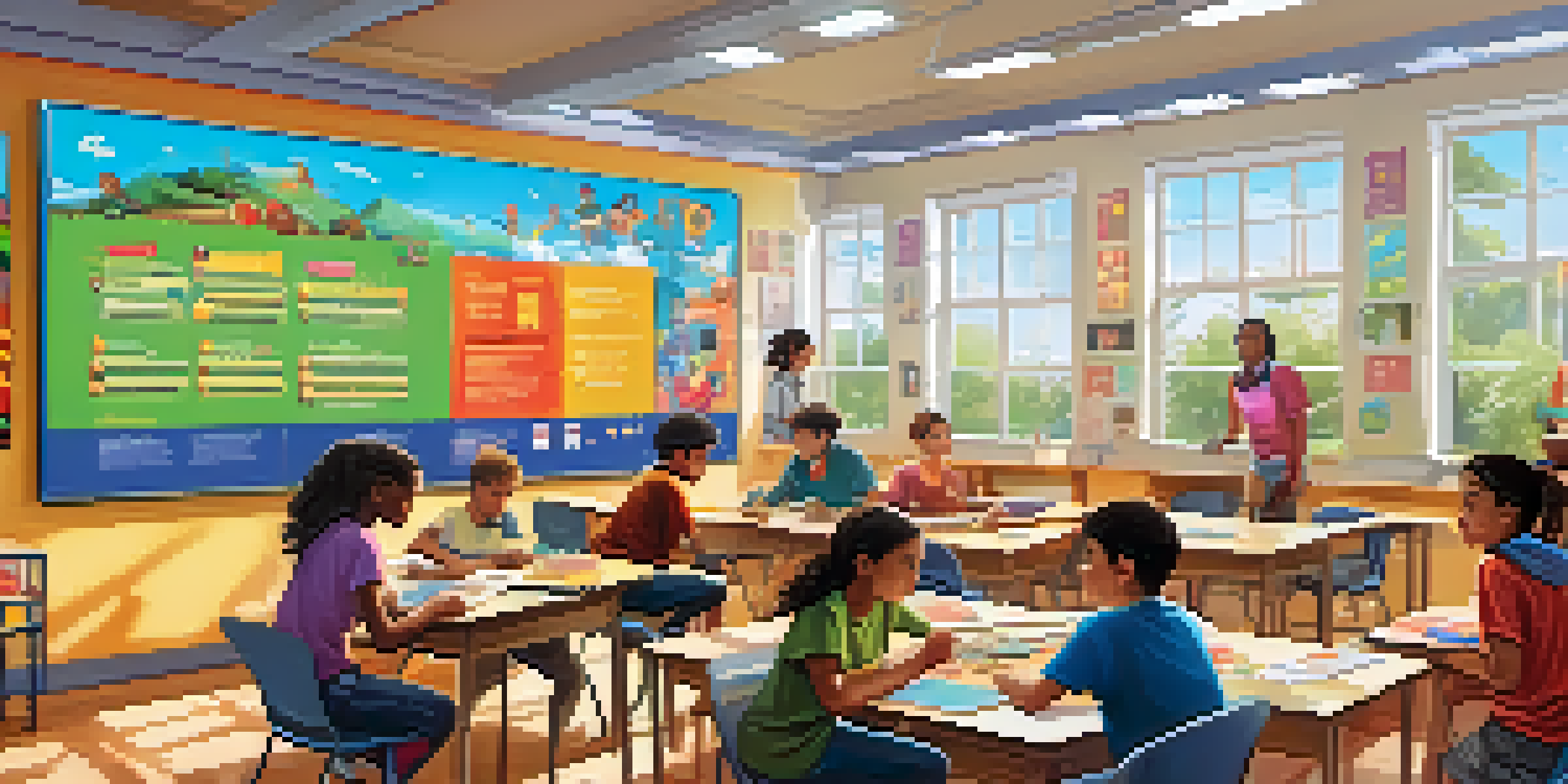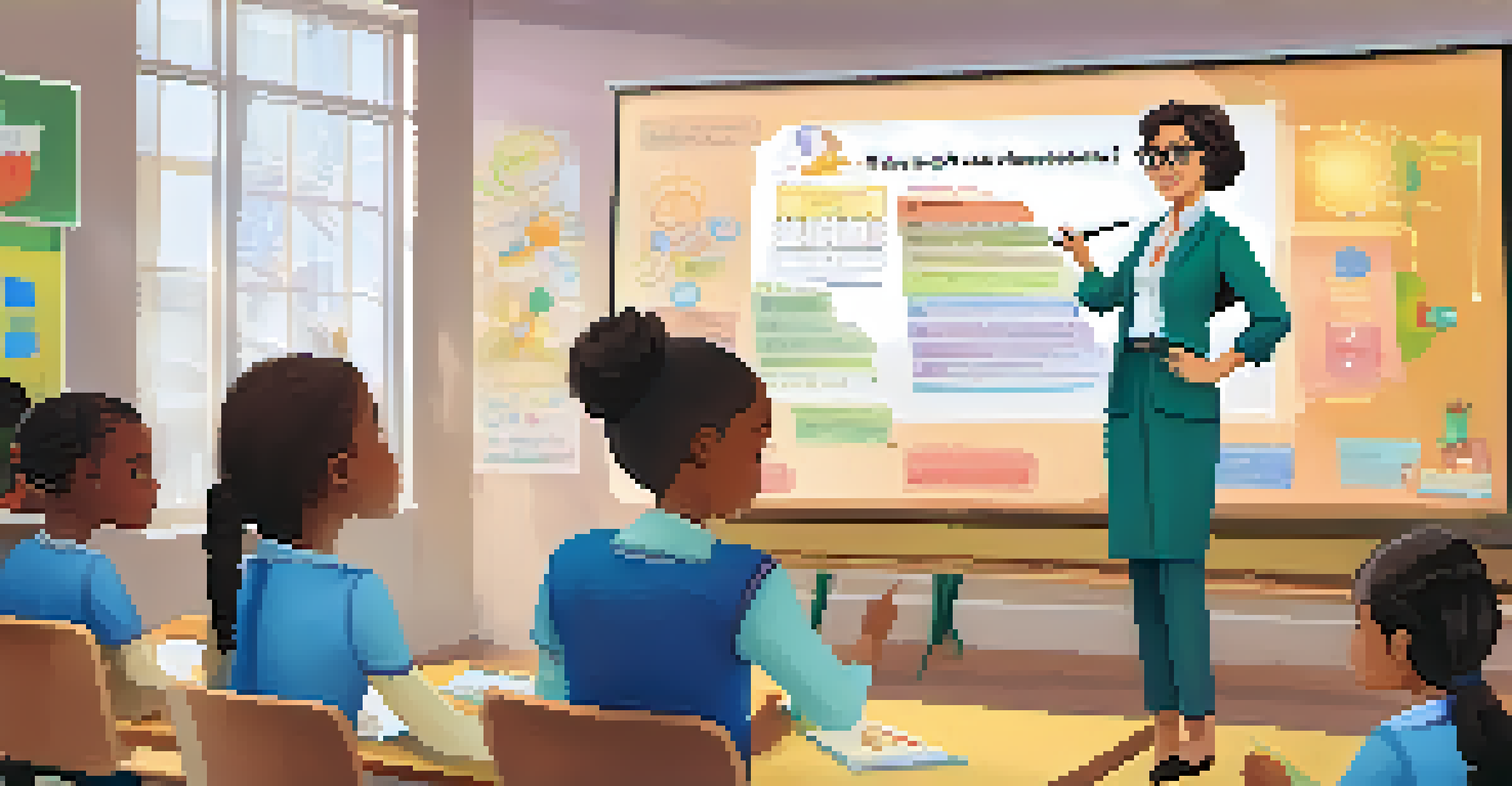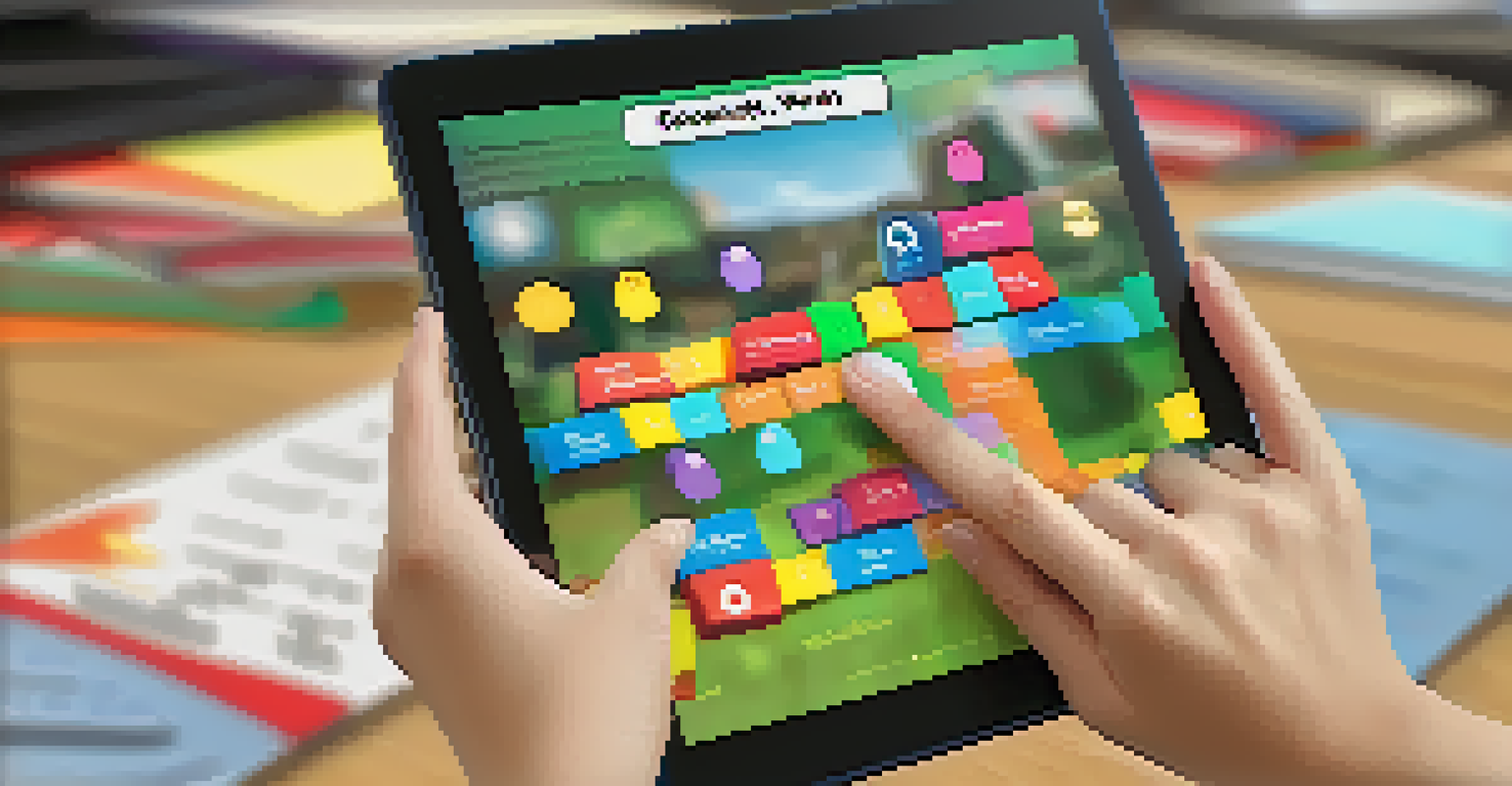Creating a Gamified Curriculum: Challenges and Strategies

Understanding Gamification in Education
Gamification in education refers to integrating game design elements into learning environments. This approach aims to enhance student engagement and motivation by making learning more interactive and enjoyable. Imagine a classroom where students earn points and badges for completing assignments, much like leveling up in a video game.
Games are the most elevated form of investigation.
The core idea is to tap into the natural human desire for competition and achievement. When students feel they are playing a game rather than simply studying, their enthusiasm often soars. This shift can lead to improved retention of information and a more positive attitude toward learning.
However, it’s important to remember that gamification isn't just about adding points or rewards. It requires a thoughtful approach to ensure educational goals are met while keeping the experience fun and engaging. Balancing game mechanics with real learning outcomes is key to a successful gamified curriculum.
Identifying Challenges in Gamified Learning
Implementing a gamified curriculum comes with its own set of challenges. One major hurdle is the resistance from educators who may be unfamiliar with game-based learning strategies. Some may feel that traditional methods are more effective, leading to a lack of buy-in for new approaches.

Another challenge is ensuring that the gamification elements align with educational standards and objectives. It’s crucial to avoid the trap of creating a game that is fun but doesn’t contribute to meaningful learning. This misalignment can result in disengaged students who are more focused on the game than the lessons.
Gamification Boosts Engagement
Integrating game design elements into education can significantly enhance student motivation and make learning more enjoyable.
Finally, there's the issue of accessibility. Not all students may have equal access to technology or the same level of comfort with gaming mechanics. Addressing these disparities is essential to creating an inclusive gamified curriculum that benefits all learners.
Strategizing for Successful Gamification
To successfully gamify a curriculum, start by clearly defining your educational goals. What do you want students to learn, and how can game mechanics support those objectives? For example, if the goal is to enhance collaboration, consider incorporating team-based challenges that require students to work together to solve problems.
The great thing about a computer notebook is that no matter how much you stuff into it, it doesn't get fat.
Next, select appropriate game elements that fit your content and objectives. This could include point systems, leaderboards, or even narrative elements that make the learning experience more immersive. Think of it like designing a game where each level represents a different topic or skill to master.
Incorporating feedback mechanisms is also vital. Just like in games where players receive instant feedback on their performance, students should be able to see their progress and understand areas for improvement. This ongoing feedback loop can motivate them to continue engaging with the material and strive for mastery.
Choosing the Right Technology and Tools
Selecting the right technology is a crucial step in creating a gamified curriculum. There are numerous platforms available that can help educators design and implement game-based learning experiences. Some popular tools offer customizable elements that allow teachers to tailor the gaming experience to their specific subject matter.
Consider using Learning Management Systems (LMS) that have gamification features built-in. These systems can help track student progress, award badges for achievements, and even facilitate collaborative activities. This approach not only streamlines the learning process but also allows for easy assessment of student performance.
Challenges in Implementation
Resistance from educators and ensuring alignment with educational goals are key challenges in adopting a gamified curriculum.
However, it’s important to ensure that the technology chosen is user-friendly and accessible to all students. Providing training for both educators and students can help alleviate any fears associated with using new tools, ensuring that everyone feels comfortable participating in the gamified experience.
Creating Engaging Content for Gamification
Engaging content is at the heart of any successful gamified curriculum. Start by incorporating storytelling elements that resonate with students. A captivating storyline can make even the most challenging subjects feel relatable and exciting, encouraging students to invest in their learning journey.
Utilizing diverse formats, such as videos, quizzes, and interactive simulations, can also enhance engagement. Variety keeps students interested and caters to different learning styles, ensuring that everyone finds something they enjoy. Think of it as creating a buffet of learning experiences where students can pick and choose what appeals to them.
Additionally, consider incorporating real-world scenarios into the gamified content. By connecting lessons to practical applications, students can better understand the relevance of what they’re learning. This approach not only makes learning more engaging but also helps students see the value in their education.
Measuring Success in Gamified Learning
To determine the effectiveness of a gamified curriculum, it’s essential to establish clear metrics for success. This might include tracking student engagement, academic performance, and overall satisfaction with the learning experience. Regular assessments can provide insights into what’s working and what needs adjustment.
Qualitative feedback from students can also offer valuable information. Surveys and discussions can reveal how students feel about the gamified elements and whether they believe those elements are enhancing their learning. This feedback can guide future iterations of the curriculum, ensuring continuous improvement.
Measuring Gamification Success
Establishing clear metrics and gathering student feedback are essential for evaluating the effectiveness of a gamified learning experience.
Moreover, incorporating peer assessment can foster a sense of community and encourage students to take ownership of their learning. When students evaluate each other's contributions and progress, they become more invested in their peers' success, creating a collaborative learning environment that benefits everyone.
Overcoming Resistance to Gamified Learning
Resistance to change is a common challenge when introducing gamified learning. Educators may worry that game mechanics will distract from serious learning objectives. To counter this, it's important to communicate the benefits of gamification clearly and share success stories from other educators who have successfully implemented these strategies.
Offering professional development opportunities can also help ease concerns. Workshops or training sessions focused on gamification can empower educators with the skills and confidence they need to try new approaches. Providing ongoing support can further encourage educators to embrace this innovative method.

Finally, involving students in the process can help generate excitement and enthusiasm around gamified learning. When students express their interest and desire for a more engaging curriculum, educators may be more motivated to adapt their teaching methods. After all, education is most effective when it meets the needs and interests of the learners.